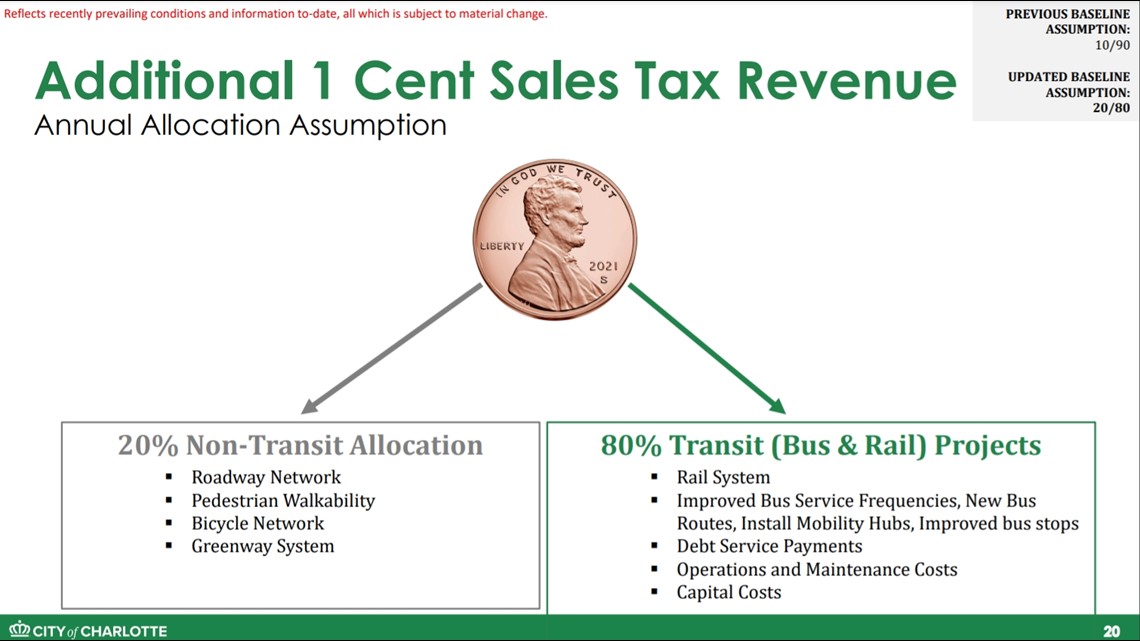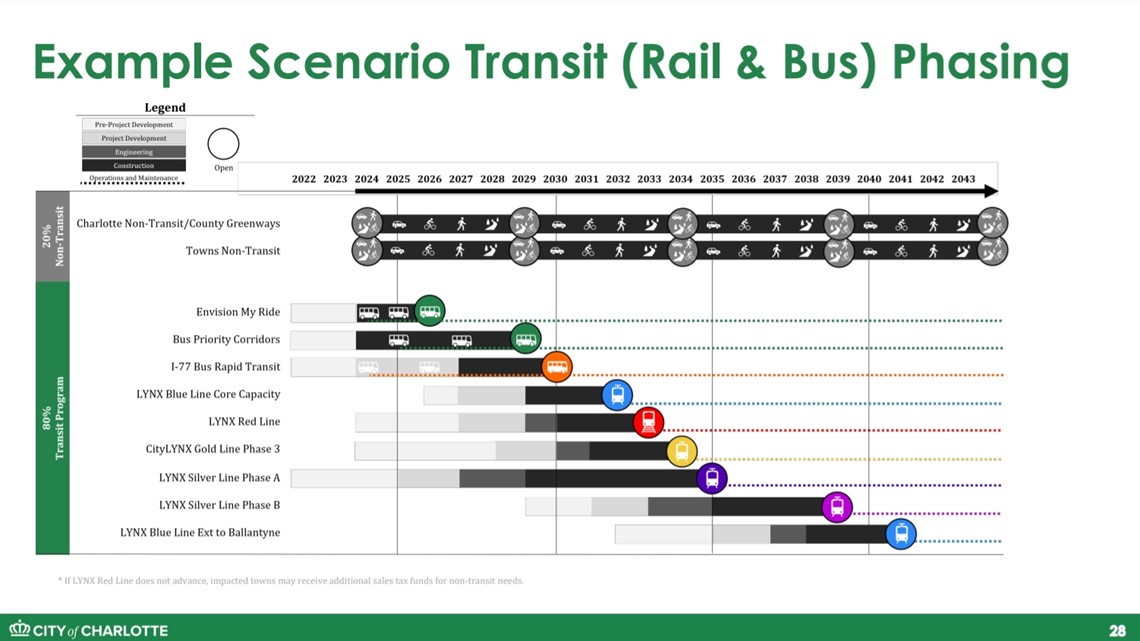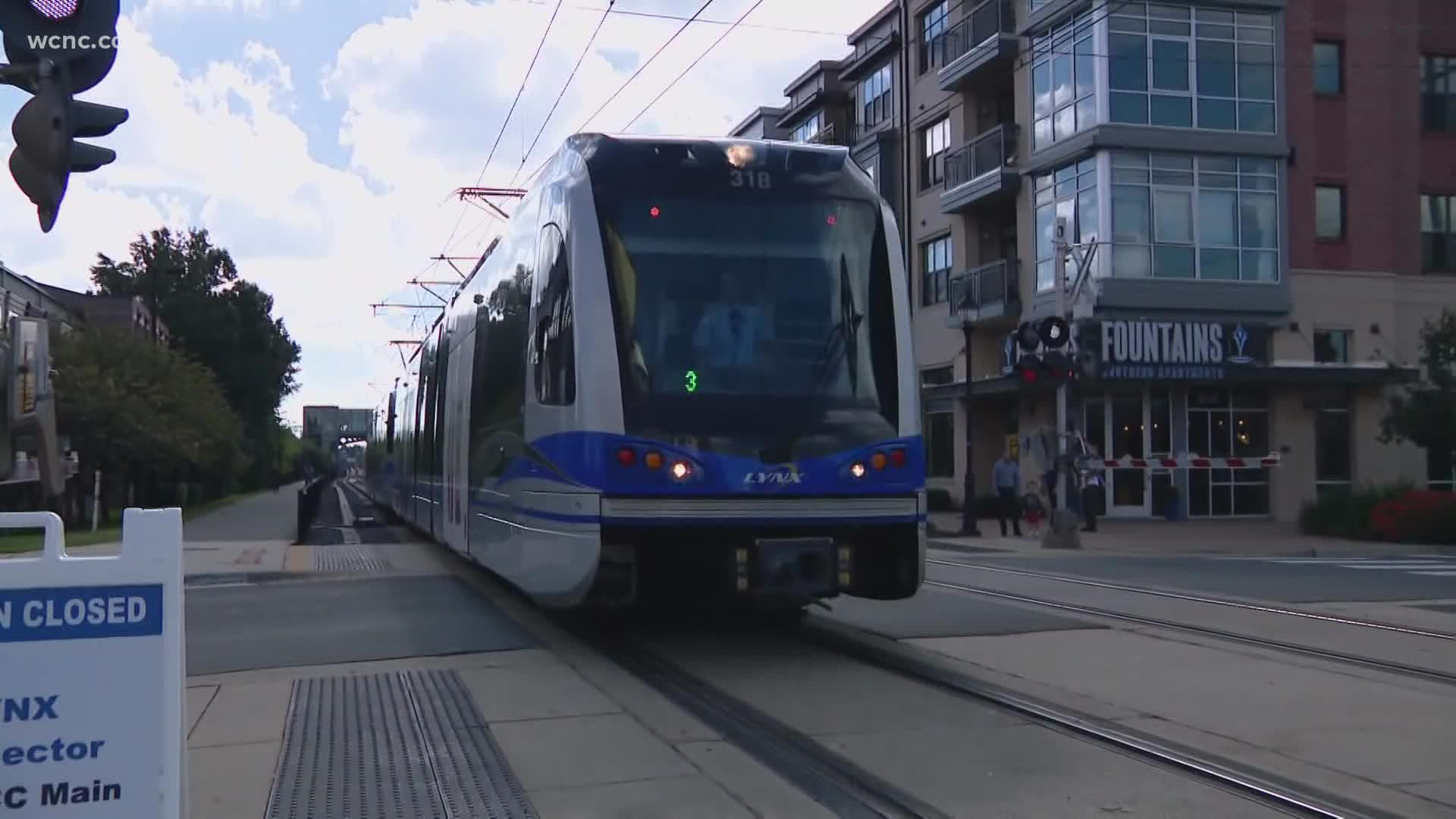CHARLOTTE, N.C. — During their fall retreat, Charlotte’s city council took a closer look at the Transformational Mobility Network. The plan includes having 110 miles of rapid transit corridors like the light rail, 140 miles of bussing, 115 miles of a greenway system, 75 miles of a bicycle network, and more.
Funding for it would come from multiple outlets, with the taxpayers being one of them. There is a proposed one-cent sales tax to create revenue for the network.
"The cost of doing nothing is real," Kelly O’Brien, Chief Advocacy and Strategy Officer for the Charlotte Regional Business Alliance, said.
Some leaders acknowledge they may have an uphill battle.
"We've got to acknowledge we have two big hurdles: to get the general assembly to allow the referendum and for the referendum to pass," Councilman Ed Driggs said.
If allowed by the general assembly, the referendum would show up on the ballot in 2022 and the sales tax would kick in in July of 2023. Twenty percent of the revenue would go to non-transit allocation like roadways and greenways. The other 80% would go to transit projects, which include buses and the rail system.


Councilman Driggs suggests this tax hike could cost families hundreds of dollars.
"Are you prepared to start paying what I reckon is about $600 a household in additional sales tax?" Driggs asked. "That’s a back-of-the-envelope guess. But something like that in order to realize this vision, this long-term plan. Those payments are going to start right away."
That price tag is lofty for some councilmembers who are worried their districts will be left out in parts of the network.
"When I look at a Transformational Mobility Network plan that doesn’t include something substantial for Steele Creek to alleviate congestion, that’s where I want to understand are other building blocks," Councilwoman Victoria Watlington said. "How are we going to fund road improvements that Steele Creek desperately needs?"
The funding will first go to buses, allowing for new routes and faster pick-up times. As far as rail projects, they’re all still 10-plus years away.



